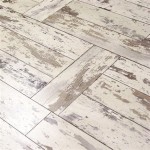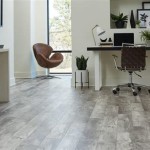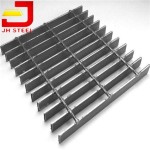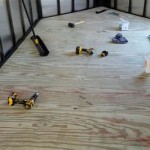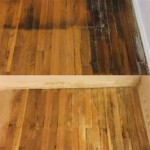Laying Moisture Barrier for Laminate Flooring: A Comprehensive Guide
Laminate flooring, renowned for its durability, affordability, and aesthetic appeal, is a popular choice for both residential and commercial spaces. However, like all flooring materials, it is susceptible to damage from moisture. A properly installed moisture barrier is critical for protecting laminate flooring from water vapor, preventing warping, mold growth, and ultimately extending the lifespan of the floor.
This article will provide a detailed exploration of the importance of moisture barriers, the types available, the proper installation techniques, and the factors to consider when selecting the appropriate barrier for a specific project. Understanding these aspects is crucial for achieving a long-lasting and visually appealing laminate floor.
Moisture can originate from various sources, including rising damp from the subfloor, spills, humidity, and plumbing leaks. Laminate flooring, while generally water-resistant on its surface, is vulnerable to moisture seeping in through the seams or from below. This moisture can cause the core of the laminate planks to swell and distort, leading to buckling, uneven surfaces, and ultimately requiring costly repairs or replacement.
Understanding the Critical Role of a Moisture Barrier
A moisture barrier is a layer of material specifically designed to prevent the passage of water vapor from the subfloor into the laminate flooring. It acts as a protective shield, mitigating the potential damages caused by moisture infiltration. The primary function of a moisture barrier is to maintain the integrity and stability of the laminate flooring by minimizing the effects of humidity and dampness.
The need for a moisture barrier is especially pronounced in areas with high humidity levels or where the subfloor is concrete. Concrete, by its nature, is porous and can transmit moisture from the ground. Without a moisture barrier, this moisture can migrate into the laminate flooring, leading to the aforementioned problems. Even in less humid climates, a moisture barrier provides an additional layer of protection against spills and incidental moisture.
Failing to install a moisture barrier can void the warranty provided by the laminate flooring manufacturer. Most warranties stipulate that proper installation procedures, including the use of a moisture barrier, must be followed to be eligible for coverage. Therefore, installing a moisture barrier is not just about protecting the floor; it is also about safeguarding the investment in the flooring material.
Beyond protecting the flooring itself, a moisture barrier can also contribute to improved indoor air quality. By preventing moisture buildup beneath the flooring, it reduces the risk of mold and mildew growth. Mold and mildew can release spores into the air, which can trigger allergic reactions and respiratory problems for occupants. A moisture barrier helps to create a healthier living environment.
Exploring Different Types of Moisture Barriers
Several types of moisture barriers are available for laminate flooring installation, each with its own properties and suitability for different applications. The selection of the appropriate type depends on factors such as the subfloor material, the level of moisture expected, and the specific requirements of the flooring manufacturer.
Polyethylene Film: This is a common and cost-effective type of moisture barrier. It consists of a thin sheet of plastic film, typically 6 mil or thicker. Polyethylene film is effective at blocking moisture vapor and is relatively easy to install. It is often used on concrete subfloors to prevent moisture from migrating into the laminate flooring. However, it is important to ensure that the film is properly overlapped and taped at the seams to create a continuous barrier.
Felt Underlayment with Moisture Barrier: Some underlayments come with an integrated moisture barrier. These products typically consist of a layer of felt or foam that provides cushioning and sound absorption, combined with a polyethylene film or other moisture-resistant layer. This type of underlayment offers the convenience of a single product that provides both cushioning and moisture protection.
Liquid-Applied Moisture Barriers: These are applied directly to the subfloor using a roller or brush. They create a seamless and continuous barrier that is highly effective at blocking moisture. Liquid-applied barriers are particularly useful on uneven or irregular subfloors where it may be difficult to install sheet-based barriers. However, they require careful application and sufficient drying time before installing the laminate flooring.
Specialized Underlayments with Vapor Retarders: Certain underlayments are specifically designed for use in areas with high moisture levels. These may incorporate features such as closed-cell foam or specialized coatings to enhance their moisture resistance. They are often recommended for basements, bathrooms, and other areas where moisture is a significant concern.
It is also important to consider the permeability of the moisture barrier. Permeability is a measure of how easily water vapor can pass through a material. Moisture barriers are typically rated based on their perm rating, with lower perm ratings indicating greater resistance to moisture vapor transmission. For most laminate flooring installations, a moisture barrier with a perm rating of 1 or less is recommended.
Proper Installation Techniques for Moisture Barriers
The effectiveness of a moisture barrier depends not only on the type of material used but also on the quality of the installation. Improper installation can compromise the integrity of the barrier and allow moisture to penetrate, defeating its purpose. The following steps outline the proper installation techniques for different types of moisture barriers.
Preparation of the Subfloor: Before installing the moisture barrier, the subfloor must be clean, dry, and level. Remove any debris, dust, or loose particles. Repair any cracks or unevenness in the subfloor using appropriate patching compounds. Allow the patching compound to dry completely before proceeding. For concrete subfloors, test the moisture content using a moisture meter to ensure that it is within the acceptable range specified by the flooring manufacturer. If the moisture content is too high, allow the concrete to dry further or apply a specialized primer to reduce moisture transmission.
Installation of Polyethylene Film: Unroll the polyethylene film over the subfloor, overlapping the edges by at least 6 inches. Secure the edges of the film to the walls using duct tape or painter's tape. Tape the seams together using a waterproof tape specifically designed for this purpose. Ensure that the tape is applied smoothly and tightly to create a continuous seal. Avoid walking on the film excessively during installation to prevent tears or punctures. Inspect the film carefully for any damage and repair any tears with tape.
Installation of Underlayment with Integrated Moisture Barrier: Unroll the underlayment over the subfloor, following the manufacturer's instructions. Some underlayments have a self-adhesive strip along the edges to create a tight seal. If the underlayment does not have a self-adhesive strip, tape the seams together using waterproof tape. Ensure that the underlayment is properly aligned and that there are no gaps or overlaps. Trim any excess underlayment along the walls using a utility knife.
Application of Liquid-Applied Moisture Barrier: Apply the liquid-applied moisture barrier to the subfloor using a roller or brush, following the manufacturer's instructions. Ensure that the entire surface is covered evenly and that there are no gaps or thin spots. Allow the barrier to dry completely before installing the laminate flooring. The drying time may vary depending on the product and the ambient temperature and humidity.
Dealing with Obstacles: When installing the moisture barrier around pipes, doorways, or other obstacles, carefully cut the material to fit around the obstacle, leaving a small gap. Seal the gap with waterproof tape or sealant to prevent moisture from entering. Pay particular attention to areas where moisture is likely to accumulate, such as around plumbing fixtures.
Ventilation: Proper ventilation is essential during and after the installation of the moisture barrier. Ensure that the room is well-ventilated to allow moisture to escape and to promote drying. Use fans or dehumidifiers if necessary to reduce humidity levels.
By following these installation techniques, a robust and effective moisture barrier can be established, protecting the laminate flooring from the harmful effects of moisture.
In summary, the inclusion of a moisture barrier is not optional but a necessary step in ensuring the longevity and performance of any laminate flooring installation.

What Is A Moisture Barrier And When It Needed For Flooring Inc

How To Install The Moisture Barrier Over Concrete Subfloor

What Is A Moisture Barrier And When It Needed For Flooring Inc

How To Lay Underlayment For Laminate Flooring

6 Mil Vapor Barrier Underlayment Over Concrete Floors

What Is A Moisture Barrier And When It Needed For Flooring Inc

Blue Polyethylene Moisture Barrier And Vapor Underlayment 6mil Dekorman

Roberts Moisture Barrier 300 Sq Ft 144 X In W 25 L 6 Mm T Underlayment For Engineered Hardwood Spc Laminate Floors 70 116 The Home Depot

What To Know Before Flooring Underlayment

How To Install Underlayment And Laminate Flooring
Related Posts


